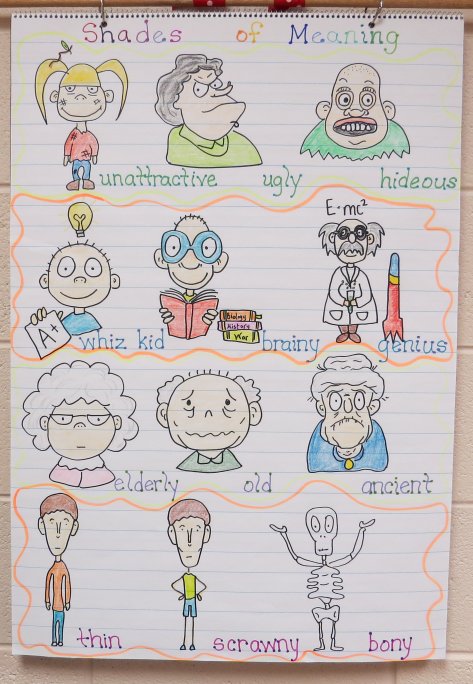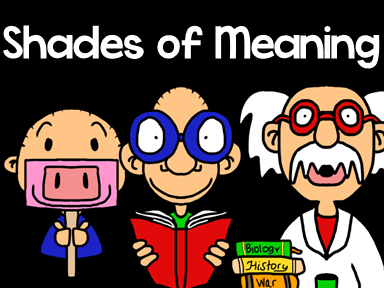Additional Shades of Meaning Resources
Teaching Idea #1 – Shades of Meaning Word Wall
One great way to introduce the concept of shades of meaning is by using different shades of color. Try using this free color word wall to introduce shades of meaning to your students.
Activity
Print out all the words for various shades of one color. For example, midnight blue, cobalt, indigo, Duke blue, federal blue, Yale blue, denim, oxford blue, sky blue, and azure. Have students organize these colors from the darkest shades to the lightest shades.
Use this as an analogy that many words can be organized by similar values from stronger to milder meanings.
Teaching Idea #2 – Synonyms and Antonyms Chart

Create a chart that lists common words along with their synonyms and antonyms. This helps students see the range of meanings and understand how to choose the best word for their writing.
Activity: Synonym Gradient
Select a common word, like "happy." List synonyms such as "content," "pleased," "joyful," "elated," and "ecstatic." Have students arrange these synonyms in order of intensity. This visual activity helps them understand the gradient of meaning.
Teaching Idea #3 – Contextual Sentences

Provide sentences that use synonyms with different shades of meaning. Discuss how the choice of word affects the sentence's meaning and tone.
Activity: Sentence Transformation
Give students a basic sentence, like "The sky was dark." Ask them to rewrite the sentence using different synonyms for "dark," such as "dim," "gloomy," "shadowy," "murky," and "pitch-black." Discuss how each word changes the nuance of the sentence.
Teaching Idea #4 – Word Ladder

Create a word ladder where each step up or down involves a word with a slightly different shade of meaning.
Activity: Word Ladder Game
Choose a base word, like "cold." Each rung of the ladder represents a step in intensity, such as "chilly," "cool," "cold," "frosty," "frigid," and "icy." Students can practice placing words on the ladder in the correct order.









